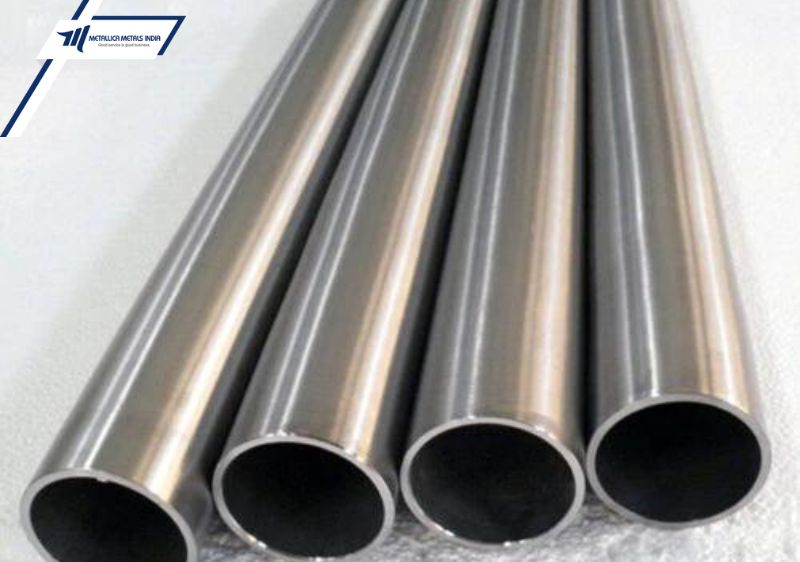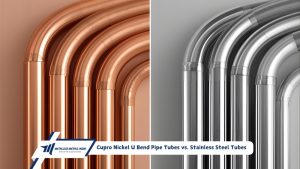In this article, we delve into the world of stainless-steel pipes, spotlighting 304 and 316-grade steels—two of the most commonly used stainless steel grades in tubing. Knowing their differences is critical for engineers, designers, and anyone involved in construction, manufacturing, or home improvement.
What is 304 Stainless Steel Pipes?
A 304 stainless steel pipe is a popular grade of stainless-steel tubing known for its excellent corrosion resistance, durability, and versatility. Comprising 18% chromium and 8% nickel, it exhibits high resistance to oxidation and corrosion in various environments. Widely used in industrial, architectural, and domestic applications, 304 stainless steel pipes are valued for their strength and ease of fabrication.
What is 316 Stainless Steel Pipes?
A 316 stainless steel pipe is a corrosion-resistant tubing made from the alloy known as AISI 316 or UNS S31600. It contains 16-18% chromium, 10-14% nickel, and 2-3% molybdenum, enhancing the resistance of corrosive elements. Widely used in marine, chemical, and pharmaceutical industries, 316 stainless steel pipes offer excellent durability, high-temperature resistance, and superior corrosion resistance.
Chemical Composition and Alloying Elements
The secret to the diverse capabilities of stainless steel lies in its chemical composition. Both 304 and 316 steels belong to the austenitic family of stainless steel, which means they primarily consist of iron, chromium, and nickel. However, the minute differences in their alloying elements separate the two.
304 Stainless Steel Pipe: Generally, this grade contains approximately 18% chromium and 8% nickel – a makeup known as 18/8 stainless steel. While manganese can be present up to 2%, the rest is iron.
316 Stainless Steel Pipe: This alloy carries a higher nickel content than 304 at around 10% and adds 2% molybdenum into the mix. The molybdenum gives 316 superior corrosion resistance compared to 304, particularly against chlorides and marine environments.
Corrosion Resistance:
304 Stainless Steel Pipe: While 304 offers excellent resistance to oxidation and various chemicals, it can struggle in saline or chloride-exposed environments.
316 Stainless Steel Pipe: Unlike 304, including molybdenum in 316 renders it particularly robust against corrosive environments. This makes it the go-to choice for marine applications and exposure to harsh chemicals.
Strength and Durability:
Both steel grades boast formidable strength and durability, but there are slight variances to consider when selecting a grade for your needs.
304 Stainless Steel Pipe: Offers ample tensile strength appropriate for most uses and exhibits significant formability and weldability, simplifying its integration into various applications.
316 Stainless Steel Pipe: Though similar in strength to 304, 316’s addition of molybdenum offers a boost in strength at elevated temperatures, making it suitable for more rigorous conditions.
The impact and fatigue resistance of 316 make it a reliable option in constructing exhaust manifolds, chemical processing equipment, and pharmaceutical and photonic applications where reliability is non-negotiable.
Applications and Common Uses:
Identifying the right grade for an application is pivotal to efficiency and longevity.
304 Stainless Steel Pipe: includes kitchen appliances, plumbing fixtures, and automotive body parts chosen for its versatility and is a food and beverage industry staple.
316 Stainless Steel Pipe: A champion in preventing corrosion, 316 is favoured in pharmaceuticals, marine hardware, and surgical instruments. Its resilience makes it a preferred option for applications demanding higher corrosion resistance.
Cost Considerations:
The advanced characteristics of 316 come at a premium. Sourcing this grade, especially in larger diameters or longer lengths, typically commands a higher price tag.
304 Stainless Steel Pipe: generally more affordable due to the absence of molybdenum. For indoor applications or those not exposed to harsh corrosion factors, 304 provides an economical yet effective solution.
316 Stainless Steel Pipe: The cost uptick associated with 316 reflects its enhanced corrosion resistance and durability in challenging environments.
When budgeting for a project, consider the long-term cost implications of potential maintenance, replacement, and failure.
Conclusion:
304 and 316 stainless steels are sophisticated alloys that balance cost with functionality. While their differences might not be extreme, they are significant regarding the final application. Choosing the right grade involves thoroughly analyzing environmental conditions, stressing forces, and the longevity you expect from your piping. Whether you plumb the ocean’s depths with 316 or cozy up to cost-effective construction with 304, a knowledgeable selection of your stainless steel is pivotal. With an informed choice, your piping infrastructure will stand the test of time, delivering performance without compromise.







